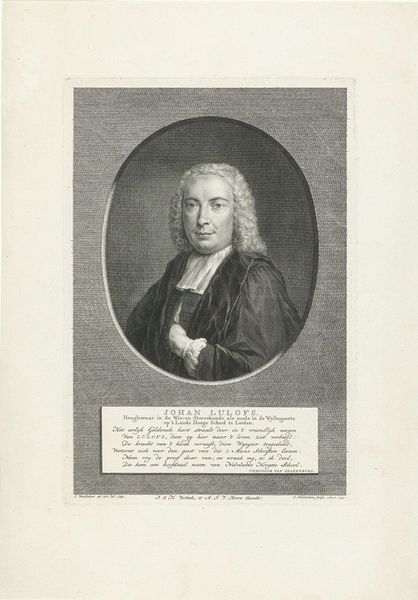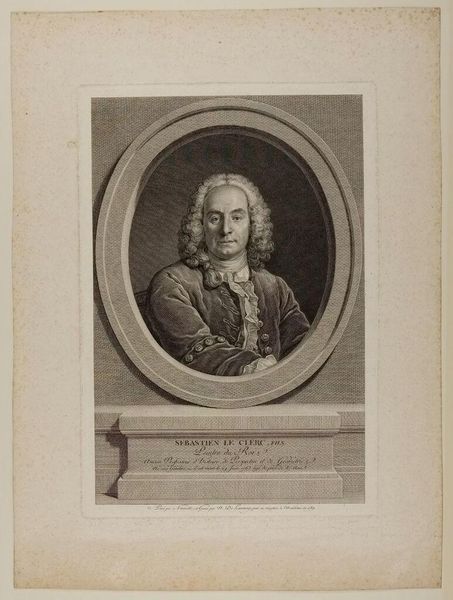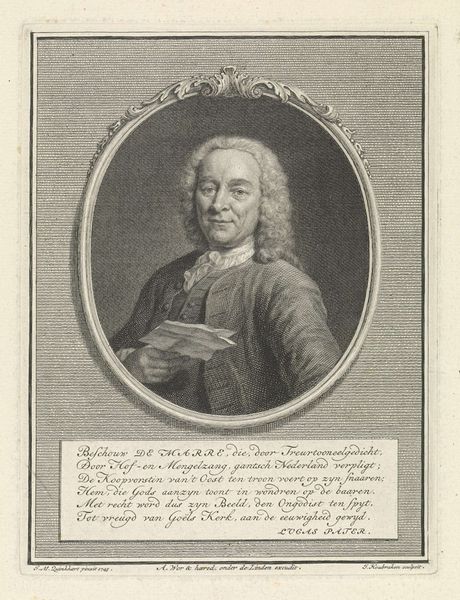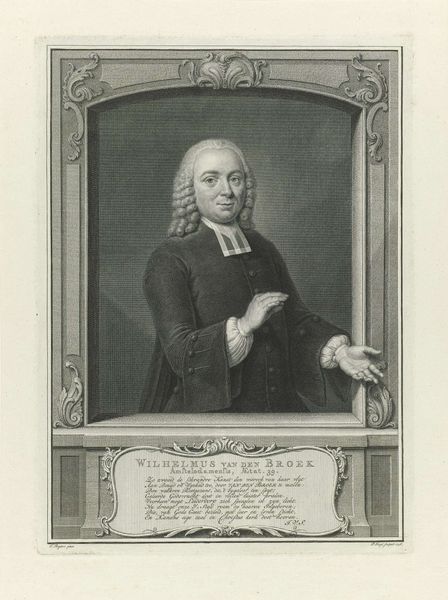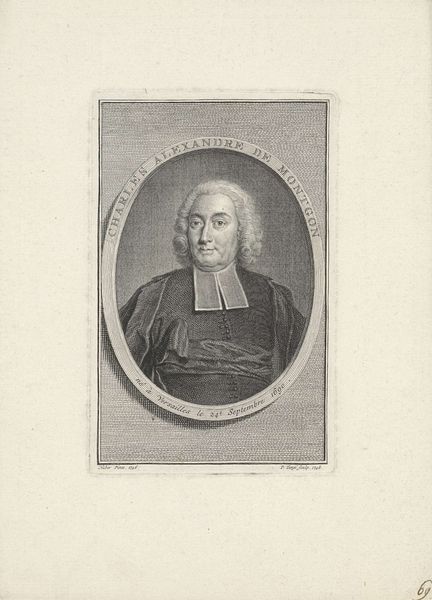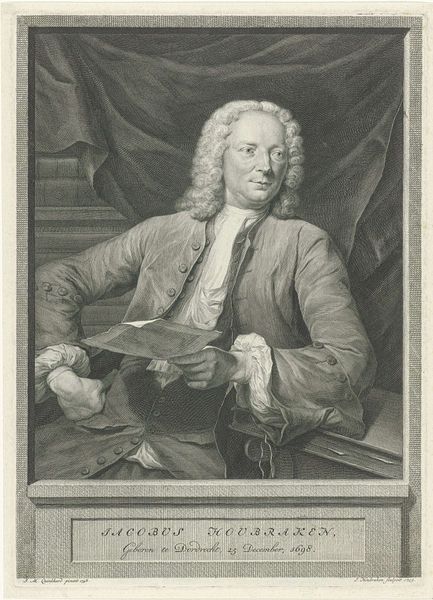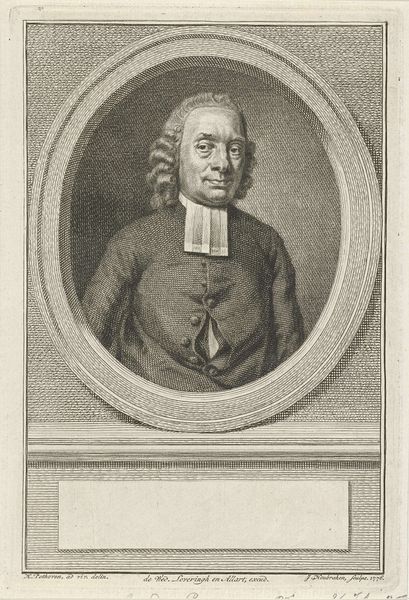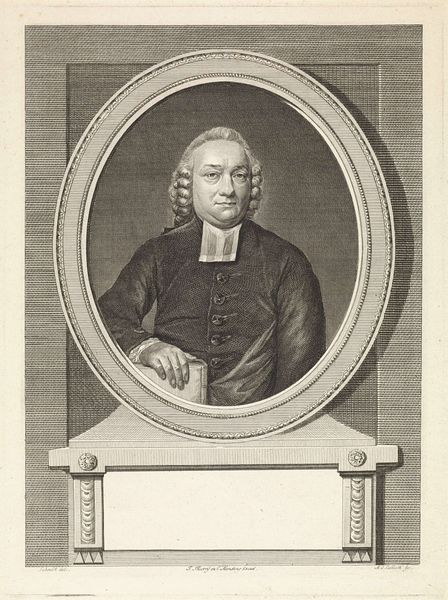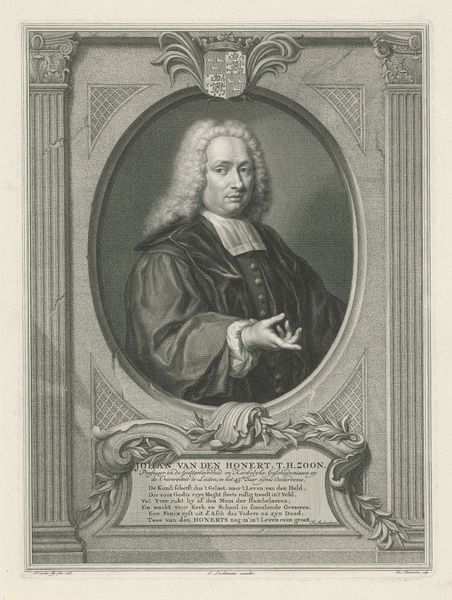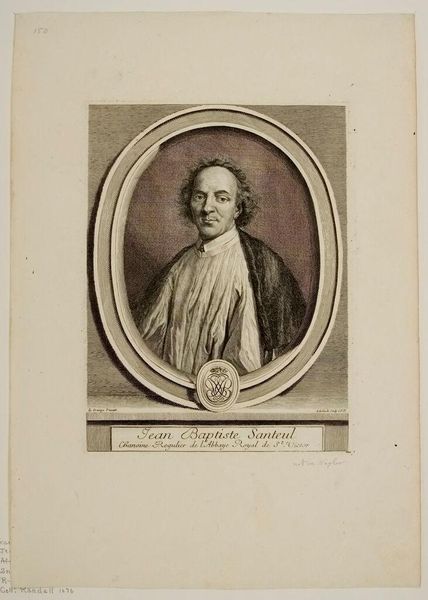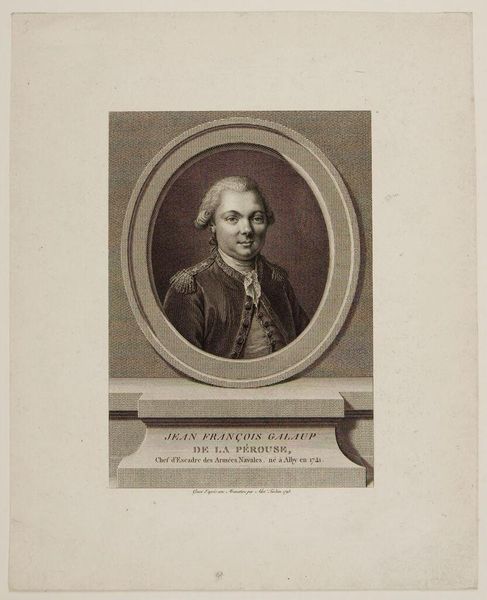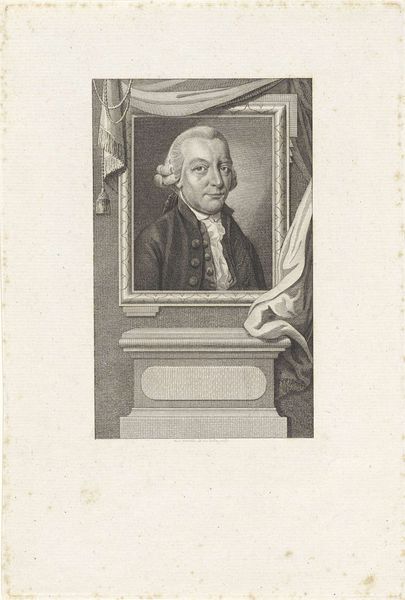
print, engraving
#
portrait
#
baroque
# print
#
pencil drawing
#
engraving
Dimensions: height 196 mm, width 143 mm
Copyright: Rijks Museum: Open Domain
Curator: Well, hello there! Right in front of us, we have Pieter Tanjé’s “Portret van Hermanus van den Burg," completed sometime between 1752 and 1754. This striking engraving captures a man of obvious importance, doesn't it? Editor: Absolutely. The immediate feel is restrained...contained, almost like he's aware of the rules, but itching to break free. The soft shades give him this air of old-world respectability while still keeping him from becoming completely one-dimensional. Curator: I concur with your interpretation, Editor! From a purely formal perspective, we can dissect the composition to fully appreciate how meaning is produced. Note the carefully considered arrangement of light and shadow, expertly crafted through engraving on... presumably copper or a similar metal, and its interplay on the subject's face, imbuing the man, Hermanus, with vitality. And the Baroque elements are undeniable: look at the sumptuous wig, the drape of the jacket! The contrast is beautifully modulated in this monochromatic presentation, of course. Editor: Yeah, he's rocking that wig! It makes me think about performance, doesn't it? Like how much of our identity is just putting on a show for other people. Look at the fingers of his right hand, pointing…directing. It’s a studied pose, yet Tanjé manages to humanize him somewhat. What do you think he was really like? Someone confident enough to have this printed? Or, someone simply obligated because of status. I want the gossip. Curator: Indeed. I perceive those intentional and symbolic attributes as highly constructed within the codes of portraiture, the engraver acting, as it were, as a mediator, conveying certain societal principles onto a broad audience through dissemination and circulation. Semiotics can assist us as we consider Hermanus’s expression in its broader philosophical or psychological setting, for example, particularly the gaze...is there one of self-assessment? Authority? An air of skepticism perhaps? This portrait is designed for the subject’s remembrance, yes? Editor: Absolutely; but I like thinking of that man staring back—confronting our view and judgment. Makes the engraving much more vital and the discussion more immediate and necessary. Curator: Precisely. Editor: It seems that by considering our subject so thoroughly, even across centuries, it is impossible for the past to die away altogether.
Comments
No comments
Be the first to comment and join the conversation on the ultimate creative platform.
